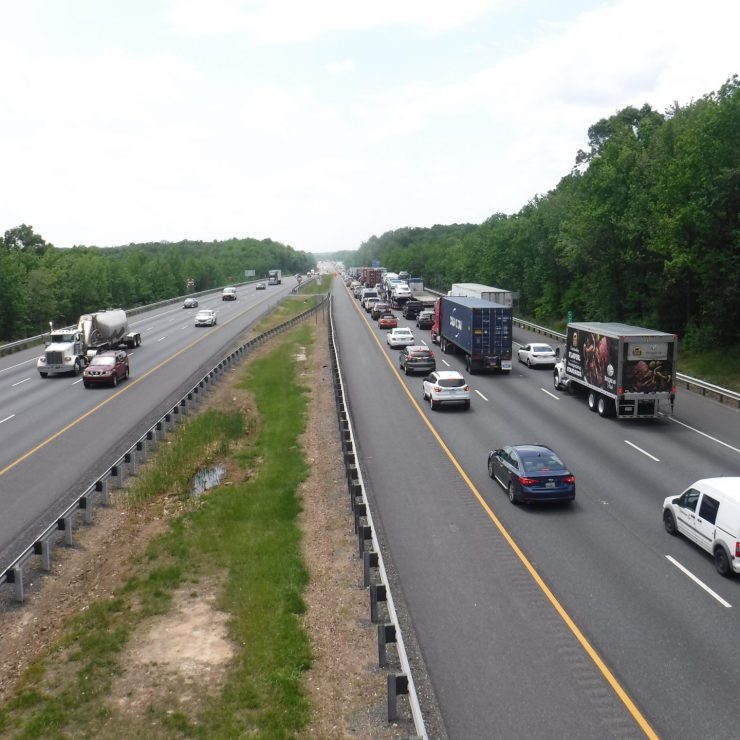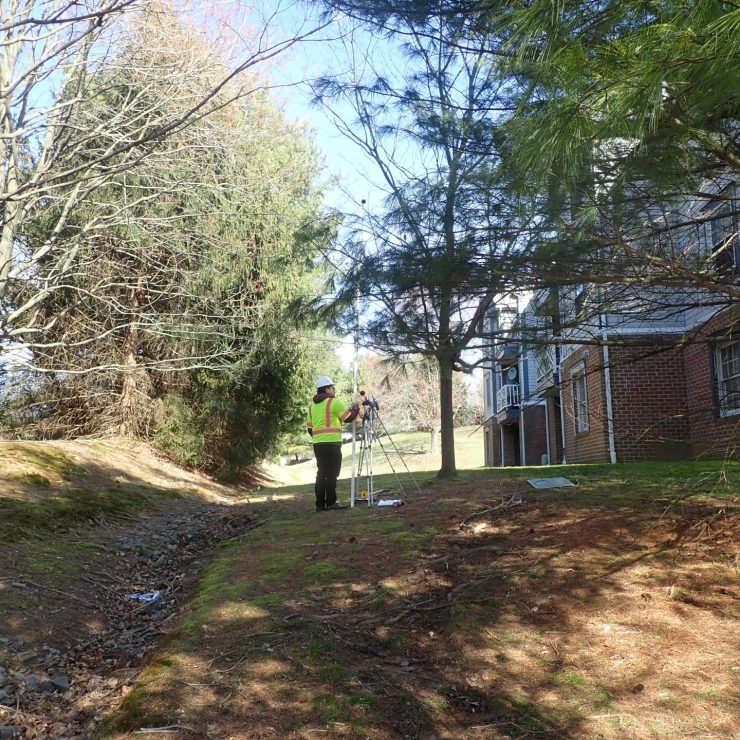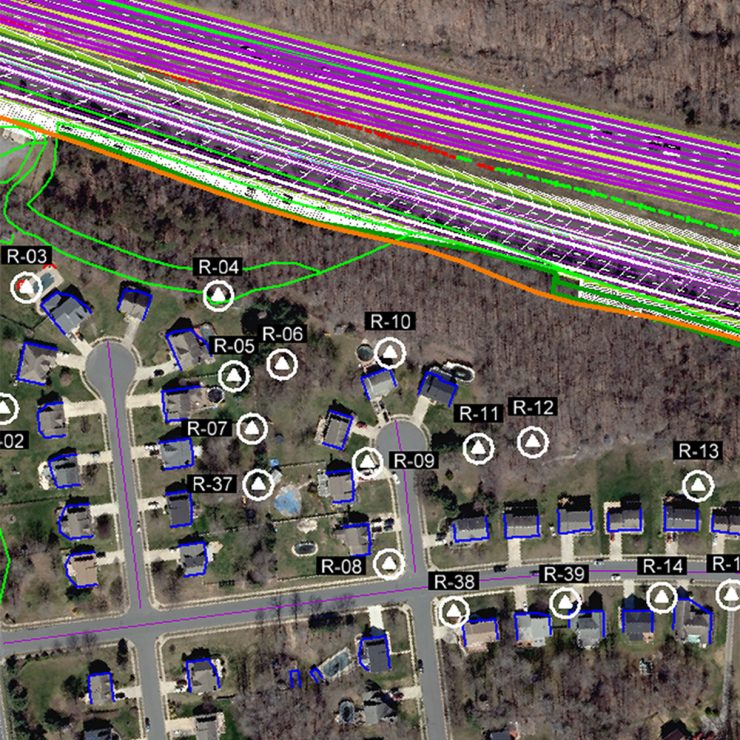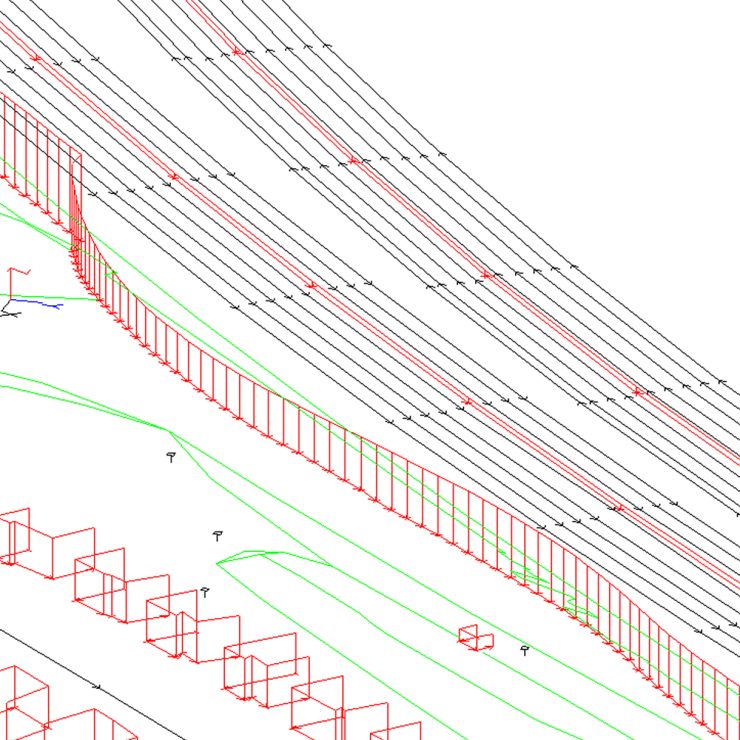The What and Why of Traffic Noise Analysis
By: Lauren McMahon, CEP-IT
From my experience as an acoustical analyst, I have often heard that many people do not understand what we do, and why we do what we do. Noise has become a passion of mine and we noise consultants are in our own niche with only a handful of experts throughout the Country. I hope I can teach you a little bit about what we do and why it is important.
Why is a traffic noise analysis even necessary?
A Type I traffic noise analysis is required when there are proposed highway improvements, which meet specific Federal Highway Administration (FHWA) criteria. The criteria include, but are not limited to, the addition of a through-travel lane, the construction of a new highway, or the addition or relocation of ramps or lanes. These highway improvements provide congestion relief and improve safety for travelers. As noise consultants, we are required to follow strict guidelines developed by FHWA and Maryland State Highway Administration (MDOT SHA).
So now you may be wondering…
What is the process of a traffic noise analysis?
First, a noise consultant is typically hired by a State agency to perform a traffic noise analysis. Our process begins by reviewing the proposed roadway improvements and then identifying noise sensitive areas (NSAs) that may be affected by highway noise. This typically includes residences, schools, and recreational areas. Then we perform simultaneous noise measurements in the field, which involves some field staff running the noise meters while others collect traffic data via a video camera and radar gun. It is common for us to have 10 staff in the field, all collecting data at a specific location during a specific timeframe. The key to our process is making sure that we are all synchronized in our data collection to ensure we compile accurate data that we will use to validate our Traffic Noise Model (TNM).
This is when we begin the modeling process. We start by modeling existing conditions. Our team utilizes a variety of CAD programs, such as MicroStation and GEOPAK, as well as FHWA’s Traffic Noise Model (TNM) during the analysis process. Our models include existing barriers (i.e., buildings, privacy fences, etc.), terrain or elevation changes, various ground types, forested areas, and receptors to represent the noise sensitive areas. We input the field data, and then run the model to see if it validates. The model is considered “validated” if the measured and modeled noise levels are within +/- 3 dB(A) per FHWA guidelines. Once our model is approved by the State agency and considered valid, we model proposed conditions in our Future Build Noise Model. Here, our noise model predicts future build noise levels to determine potential impacts to NSAs. A residence is considered to be impacted if the project will result in noise levels of 66 dB(A) or greater or if the project would result in a substantial increase (i.e., 10 dB(A) or more) in noise over existing levels. When impacts are determined at the noise sensitive areas, a mitigation assessment is warranted. Highway noise barriers are designed to reduce the noise levels (i.e., below the noise impact threshold). A variety of factors, such as utilities, drainage, topography, aesthetics, right-of-way and maintenance, are taken into consideration in order to determine the best noise barrier alignment and meet the State agency’s design goals and requirements. Following the mitigation assessment, we develop a Technical Noise Analysis Report, which is submitted for review by the State agency. This documents the analysis and results obtained, including rationale for assumptions, conclusions, and recommendations. Straughan may also provide community meeting support or attend a public meeting when noise barriers are proposed on a project. Most recently, Straughan attended a public meeting for one of MDTA’s I-95 Express Toll Lane (ETL) Northbound Extension projects located along MD 24. Due to the COVID-19 pandemic, this meeting was effectively held as a virtual meeting.
If a Type I noise project is in the design phase, Straughan may have the opportunity to develop the Noise Barrier Design Contract Plans. This generally includes the development of the Plan and Profile Sheets, Geometry Sheets, Typical Sections, and General Notes. These Plans are submitted at various stages of the project to meet the overall project schedule: TS&L, Semi-Final, Final, and PS&E Designs.
Straughan recently developed the Noise Barrier Design Contract Documents for one of MDTA’s I-95 Express Toll Lane (ETL) Northbound Extension projects located north of Abingdon Road. The project is currently in the Final phase of design with a project completion date within the next few years. Straughan is excited to provide noise barrier design services to MDTA and to protect an impacted community. We will be sure to post pictures of our nearly 1-mile-long noise barrier post-construction. Be sure to check back with us to see the final product!



